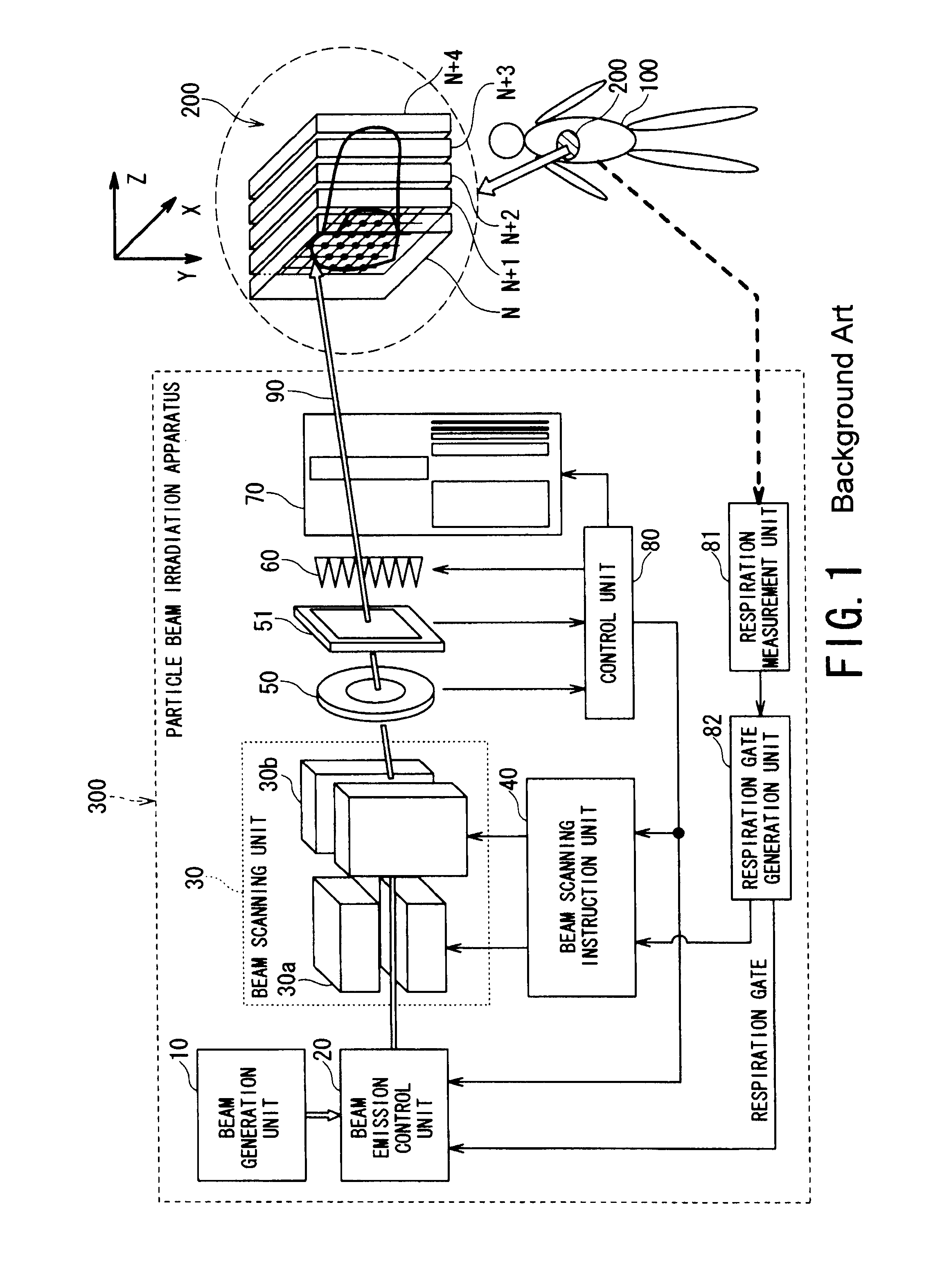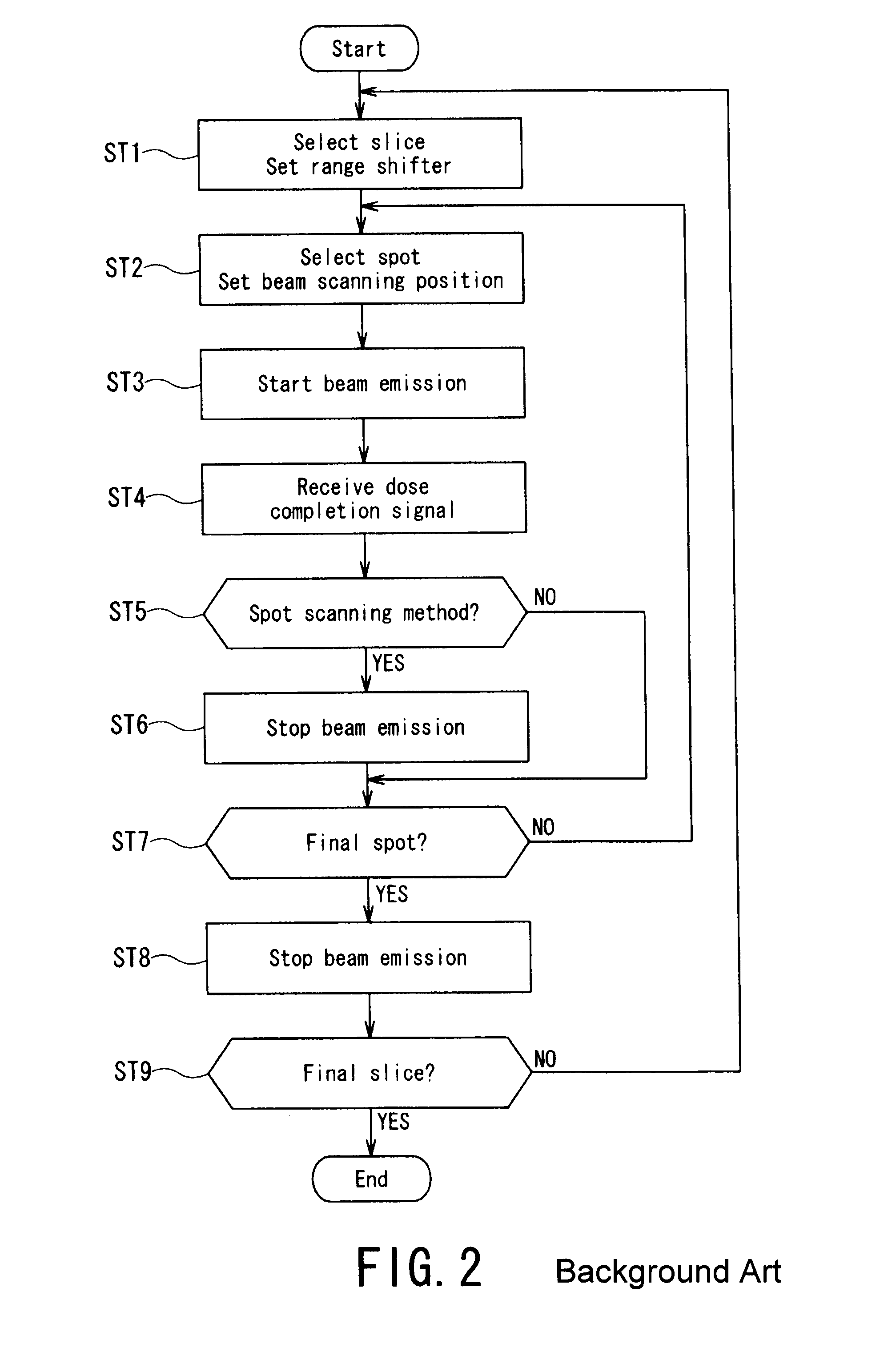Particle beam irradiation apparatus and particle beam irradiation method
a particle beam and irradiation apparatus technology, applied in the field of particle beam irradiation apparatus and particle beam irradiation method, can solve the problems of limiting the influence of scanning irradiation method, unable to strictly three-dimensionally match the beam with the shape, and the affected region cannot be scanned. the effect of reducing the therapy time, high dose setting accuracy and high uniformity of dose distribution
- Summary
- Abstract
- Description
- Claims
- Application Information
AI Technical Summary
Benefits of technology
Problems solved by technology
Method used
Image
Examples
first embodiment
[0071]FIG. 7 shows an exemplary configuration of a particle beam irradiation apparatus 1 according to this embodiment. The particle beam irradiation apparatus 1 according to the first embodiment of the present invention can ensure a desired dose for every slice with the same beam intensity even if slices have different slice areas (that is, different numbers of lattice points in the slices), and does not require adjustment of the beam intensity for each slice.
[0072]The particle beam irradiation apparatus 1 according to this embodiment shown in FIG. 7 is different from a conventional particle beam irradiation apparatus 300 (see FIG. 1) in including a pulse generation unit 83.
[0073]The pulse generation unit 83 generates a predetermined number of (the number of repeated scans of the same slice) scanning start pulses at substantially equally spaced time intervals in a respiration gate. The scanning start pulse is a timing pulse for determining start timing of each of the repeated scans....
second embodiment
[0106]In the embodiment described above, a scanning direction in the slice is one direction as shown in FIG. 3.
[0107]In a second embodiment, as shown in FIG. 12, a scanning method is used of following a path pattern on a slice in a forward direction (forward path) and then following the same path pattern in a reverse direction (backward path). A hardware configuration is the same as in the first embodiment shown in FIG. 7.
[0108]FIGS. 13A to 13H are timing charts showing operation of a particle beam irradiation apparatus 1 according to the second embodiment.
[0109]First, a scanning start pulse (for forward path) like the scanning start pulse (B) in the first embodiment is generated. This pulse train is for the forward path. This timing is used to start a slice scan of a first forward path.
[0110]In the example shown in FIGS. 13A to 13H, a slice scanning time of the forward path is set to about twice an interval Gw / m or less between the scanning start pulses (for forward path).
[0111]Whe...
PUM
 Login to View More
Login to View More Abstract
Description
Claims
Application Information
 Login to View More
Login to View More - R&D
- Intellectual Property
- Life Sciences
- Materials
- Tech Scout
- Unparalleled Data Quality
- Higher Quality Content
- 60% Fewer Hallucinations
Browse by: Latest US Patents, China's latest patents, Technical Efficacy Thesaurus, Application Domain, Technology Topic, Popular Technical Reports.
© 2025 PatSnap. All rights reserved.Legal|Privacy policy|Modern Slavery Act Transparency Statement|Sitemap|About US| Contact US: help@patsnap.com



